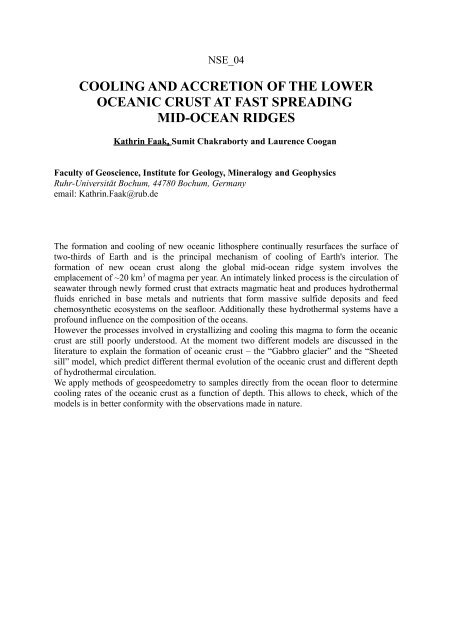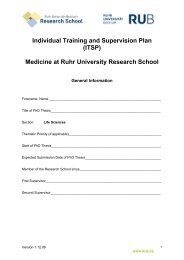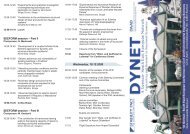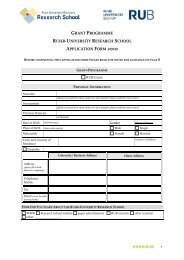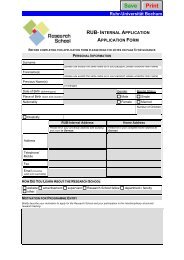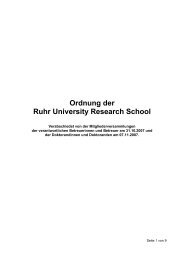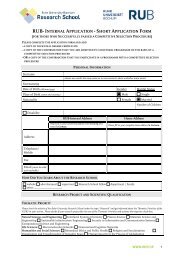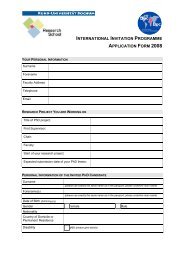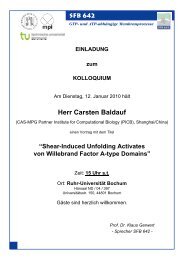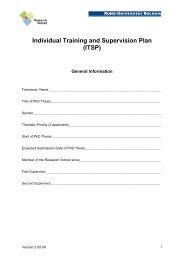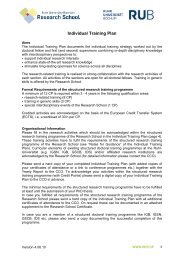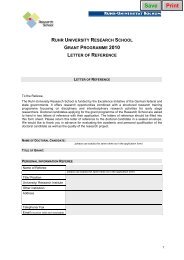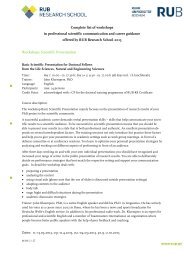Section Days abstract book 2010.indd - RUB Research School ...
Section Days abstract book 2010.indd - RUB Research School ...
Section Days abstract book 2010.indd - RUB Research School ...
Create successful ePaper yourself
Turn your PDF publications into a flip-book with our unique Google optimized e-Paper software.
NSE_04<br />
COOLING AND ACCRETION OF THE LOWER<br />
OCEANIC CRUST AT FAST SPREADING<br />
MID-OCEAN RIDGES<br />
Kathrin Faak,<br />
Sumit Chakraborty and Laurence Coogan<br />
Faculty of Geoscience, Institute for Geology, Mineralogy and Geophysics<br />
Ruhr-Universität Bochum, 44780 Bochum, Germany<br />
email: Kathrin.Faak@rub.de<br />
The formation and cooling of new oceanic lithosphere continually resurfaces the surface of<br />
two-thirds of Earth and is the principal mechanism of cooling of Earth's interior. The<br />
formation of new ocean crust along the global mid-ocean ridge system involves the<br />
emplacement of ~20 km 3 of magma per year. An intimately linked process is the circulation of<br />
seawater through newly formed crust that extracts magmatic heat and produces hydrothermal<br />
fluids enriched in base metals and nutrients that form massive sulfide deposits and feed<br />
chemosynthetic ecosystems on the seafloor. Additionally these hydrothermal systems have a<br />
profound influence on the composition of the oceans.<br />
However the processes involved in crystallizing and cooling this magma to form the oceanic<br />
crust are still poorly understood. At the moment two different models are discussed in the<br />
literature to explain the formation of oceanic crust – the “Gabbro glacier” and the “Sheeted<br />
sill” model, which predict different thermal evolution of the oceanic crust and different depth<br />
of hydrothermal circulation.<br />
We apply methods of geospeedometry to samples directly from the ocean floor to determine<br />
cooling rates of the oceanic crust as a function of depth. This allows to check, which of the<br />
models is in better conformity with the observations made in nature.


